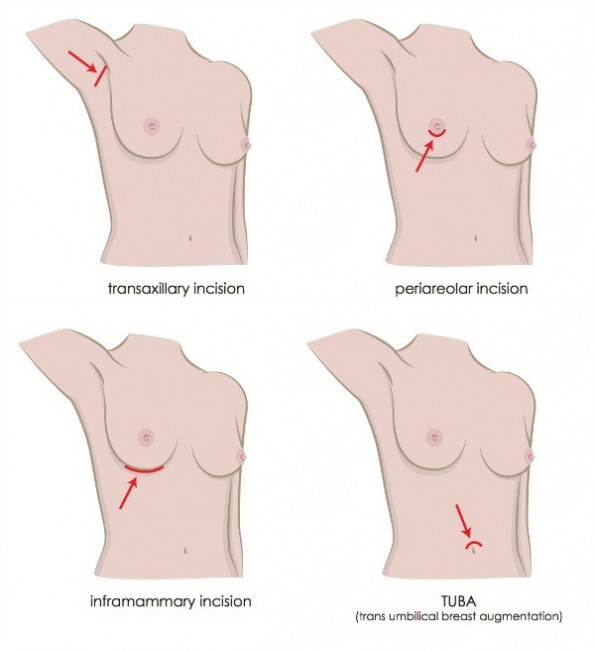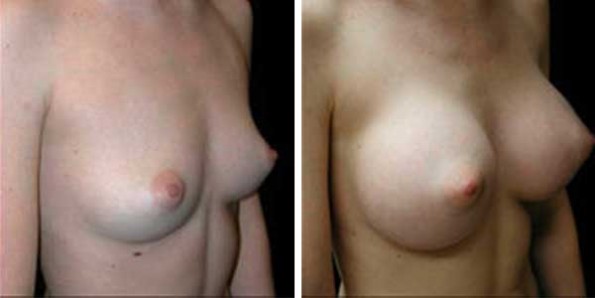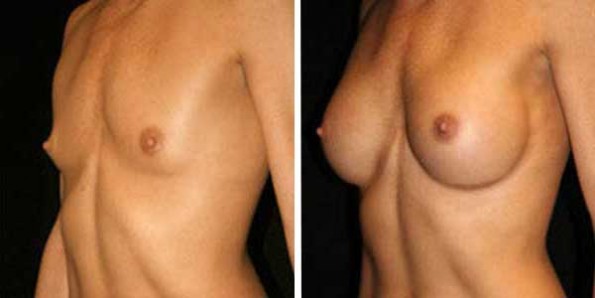
Breast implants add volume to existing breast tissue to create a fuller chest. Typically one of two types of implants is used, silicone or saline, with many options for placement, incision location, size, shape, and texture.
If you’re considering breast implants, you probably have a lot of questions. We’ve drawn on the expertise of our doctors and the RealSelf community to give you answers to those most commonly asked.
What Is Breast Implant Surgery?
Breast implant surgery is a kind of breast augmentation. This invasive procedure enhances the shape and size of breasts using silicone shells, usually filled with saline or silicone gel.
Are Breast Implants Right for Me?
Typically, women who want a larger chest have two surgical options: breast implants or breast fat transfer. The latter uses liposuction to move a woman’s fat from areas such as the thighs and stomach to increase the volume of the breasts. While fat transfer will increase the size of the breasts, do not expect the same results as those realized by implants.
“Women who seek the look of a breast implant with fat transfer will not achieve it,” says Texas plastic surgeon Dr. Mario Diana. “Breast implants and fat transfer do not give the same outcome, as these are two very different treatments for patients who have different desires.”
Women who seek breast fat transfer rather than implants tend to “prefer a smaller size and shape adjustment,” adds Dr. Diana. With fat transfer, size increases are typically one cup or less compared to the one cup or more results of implants.


What Are the Different Options for Breast Implants?
Breast implants come in a number of shapes and sizes but they fall into two main groups based on the implant’s filling.
- Saline implants are filled with sterile salt water. In the event of a leak, the body absorbs and naturally removes the saline and the implant deflates. There are two types of saline implants: single lumen (traditional) and the newer double lumen. The double lumen have internal shells that are designed to make the implant feel more like silicone and maintain their shape better with less chance of capsular contractor.
- Silicone implants are filled with an elastic gel prior to surgery. They may require a longer incision. In the event of a leak, the body does not absorb the silicone and so you may need regular check-ups and MRIs every few years to monitor the status of the implants.
You may also hear about cohesive gel breast implants. These implants use a silicone gel that is thicker than traditional silicone filling and has more of a tendency to maintain its shape. These are also known as “form-stable” or “gummy bear” implants.
Are Breast Implants Safe?
Worried that breast implants cause cancer? Don’t be.
“There is no known causal link between breast implants and cancer,” says Austin plastic surgeon Dr. Jennifer L. Walden. “This has been repeatedly conveyed in the scientific literature over decades.”
In fact, Dr. Walden adds, women with breast implants may actually detect cancers earlier than women without them, as “they are more in tune with their breast anatomy after having undergone a breast augmentation.”
As for silicone breast implants, don’t be overly concerned about them leaking, say RealSelf doctors. “The newest silicone gels are highly cohesive,” says Dr. Furnas, “so leakage into the [breast] pocket is uncommon.”
Unfortunately, not much research has been done on the health impact in the unlikely event a silicone breast implant leaks. Some refer to the range of reported symptoms as “silicone toxicity,” though the term is controversial. Back to top
How Much Do Breast Implants Cost?
While you can expect to pay upwards of $6,000 for a set of breast implants, the price varies depending on a number of factors including the type of implants (silicone tend to be more expensive than saline), experience of the surgeon, where the surgery takes place (office, surgical center), the length of the procedure, and geographic location, among others.
What Happens During a Breast Implant Procedure?
Breast implant surgery typically takes between one to three hours to complete, depending on the implant used and the doctor’s particular technique. Most breast implant procedures are performed under general anesthesia (you go to sleep), but some surgeons may choose to use local anesthesia (only the treated area is numbed).
Once you’re prepared for surgery, your doctor and the medical team will follow the predetermined surgical plan you agreed upon. After the procedure is over, you’ll be taken to a recovery area for a short period of observation. Unless your doctor thinks otherwise, you should be able to go home in your dressings and surgical bra that same day.

0 comments on “Breast Implant’s Guide”Add yours →